WHAT IS COVID-19?
The world is fighting against &&4&. What is actually &&4&? &&11& goes into details on &&4&.
Global Wellness Force, April 2020
&&4& stands for Corona &&6& disease 2019. &&4& is the term for the disease that caused by the &&6&, &&12&,
which is the abbreviation for severe acute respiratory syndrome Corona &&6& 2. Others also name this &&6& the novel 2019 Corona &&6&.
&&4& is a viral illness, it is caused by a &&6& and not a bacteria or other microorganism.
&&12& is a group IV from the corona &&6& family based on the human &&6& classification as shown in the table of classification and genomes of human &&6&es here.
Corona &&6&es that &&8& humans are from subfamily alpha and beta.
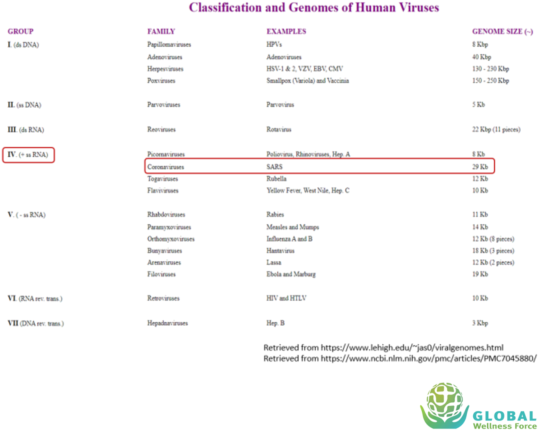
Corona &&6& is an enveloped &&6& which is relatively fragile with easily disrupted plasma membrane that makes this &&6& easy to be killed by detergent, alcohol and bleach.
The &&6& is sensitive to ultraviolet ( UV ) light where its survival decreased about 10-fold after 2 to 3 hours under direct sunlight.
Corona &&6& is 2 to 3 times more sensitive to ultraviolet compared to influenza &&6&. Corona &&6& is a positive-sense-single stranded ribosomal nucleic acid (RNA) &&6&.
This &&6& has surprisingly unusual stability for typical RNA &&6& towards changes. It has a low mutation rate.
To this date including Corona &&6& that causes this &&5& &&4&, there are 7 known corona &&6&es:
- Corona &&6&es cause mild seasonal cold-like symptoms (229E, OC43, NL63, HKU1)
- Corona &&6&es cause severe acute respiratory syndrome (&&14&)
- &&16& that caused Asia &&14& outbreak in February 2003,
- MERS-CoV (Middle East Respiratory Syndrome) that was first reported in Saudi Arabia in 2012) and
- &&12& that caused the &&4& outbreak in China in December 2019.
Corona &&6&es have wide range of species tropism, meaning that they are easy to hop between species, such as the original &&16& in 2003 hopped from bat to humans and civets,
the MERS-CoV hopped from camels to humans and the latest &&12& hopped from bats to humans, possibly through intermediary species which remains unknown to this date.
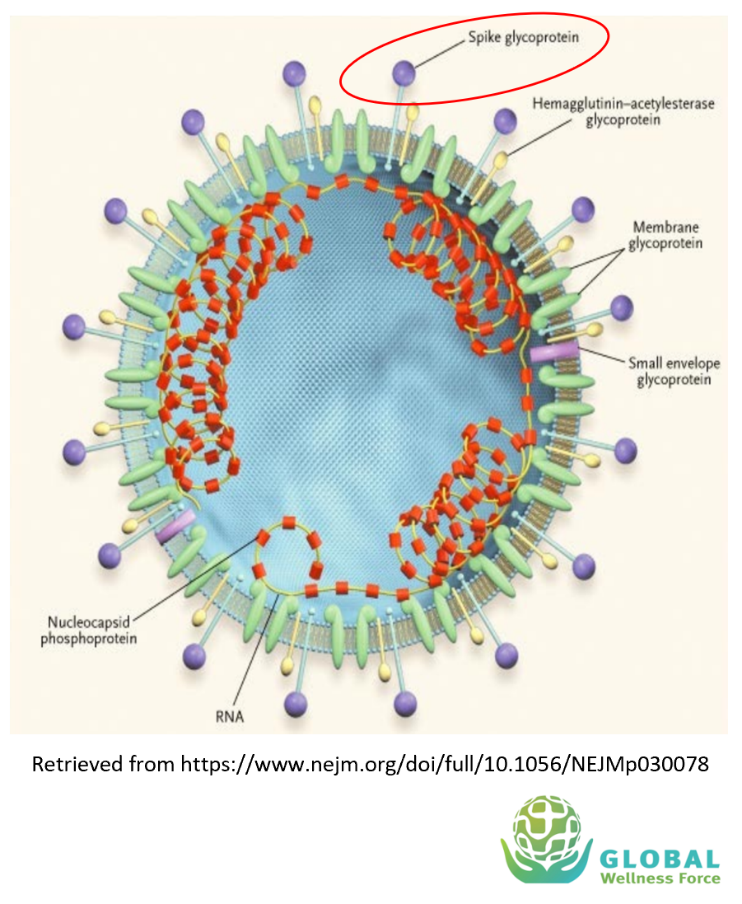
The &&12& is from the Beta subfamily and its size is reportedly around 27-32 kilo base.
The &&14&-Corona&&15&-2 is shown this picture. Please note the viral surface spike protein, shown here in red oval circle.
The corona &&6& is named after the crownlike spikes from all these viral surface spike proteins.
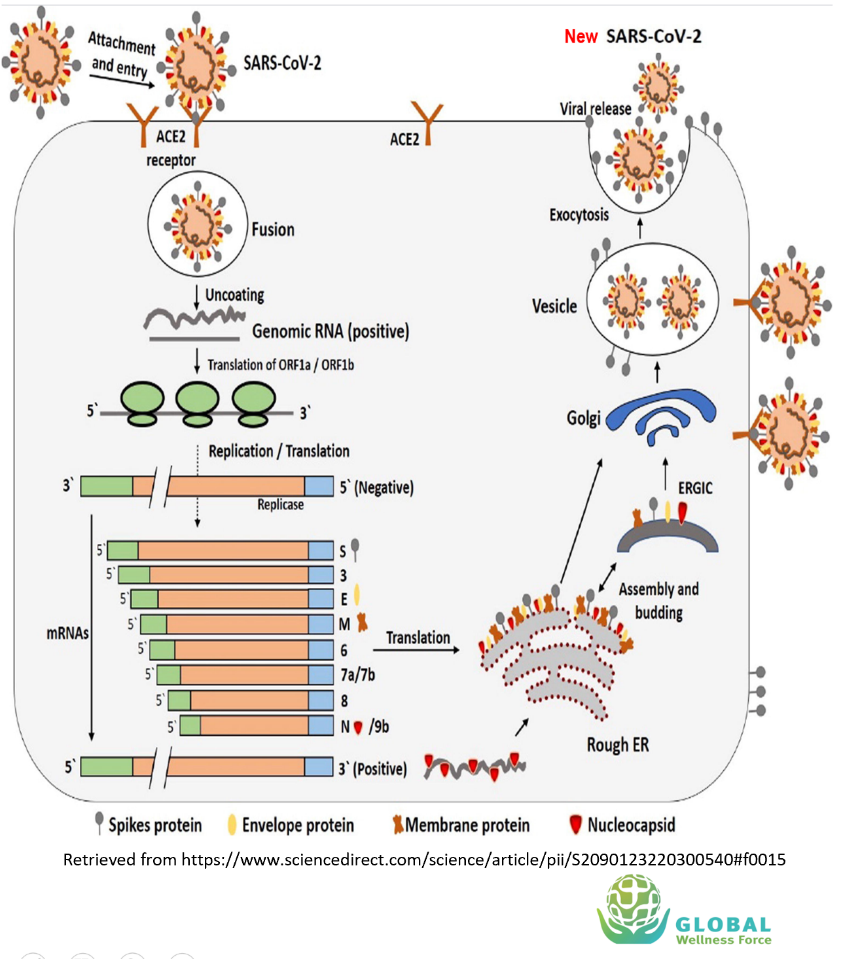
The picture shows how the &&12& enters the body cell. The &&6& spike protein attaches and enters through the angiotensin converting enzyme 2 (ACE-2) receptor on the body cell.
Once inside the body cell, the viral RNA will undergo a series of replication processes and finally the &&8& cells will release many more new &&14&-Corona&&15&-2.
The main site for &&12& infection is the lungs. It was widely reported that the potential modes of transmission of &&12& in human include inhalation of droplets from &&8& individuals,
indirect contact through exposure to fomites from contaminated inanimate objects such as clothes, utensils,
furniture and inhalation of aerogene especially during certain medical procedures that may cause aerosolized of the droplets such as intubation, extubation, non-invasive ventilator support,
suctioning, nebulization. Once the &&6& is inhaled into human lung, it binds to the ACE-2 (angiotensin converting enzyme-2) receptor on pneumocyte type-2 lung cell.
While the most common manifestations worldwide of &&4& is pulmonary or lung problems, there are mounting evidences indicated that &&4& also cause gastrointestinal illness.
This finding has brought the possibility of feco-oral transmission. Scientists from China have detected the &&6& on the glandular epithelial cells from gastric,
duodenal, rectal biopsies and on feces from &&4& patients.
This table from Journal of American Medical Association (JAMA) published online on March 11, 2020,
shows the detection of &&12& from different body specimens (from the airway and lungs in bronchoalveolar lavage fluid,
fibro-bronchoscope brush biopsy, sputum, nasal swabs, pharyngeal swabs) and in feces and blood samples.
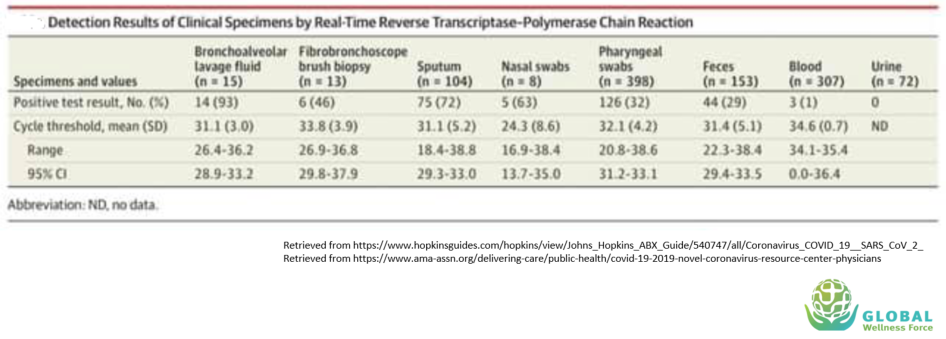
&&4& incubation period, the period between exposure of a person to &&4& and the appearance of the first symptom in that person,
is 2 to 12 days with mean duration of 6.4 days.
Typical and less common symptoms in patients with &&4& are shown in boxes red and green boxes.
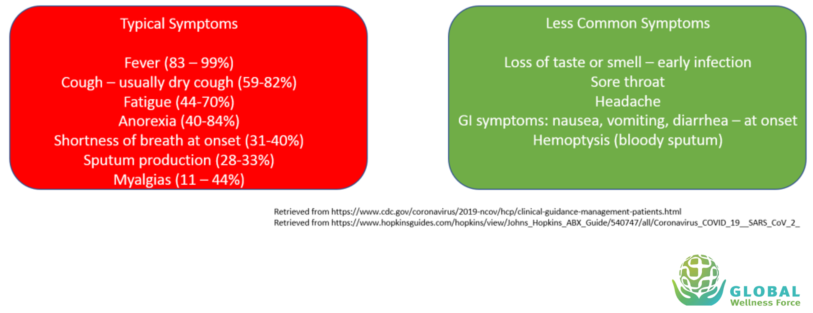
In term of &&4& disease spectrum, about 81% of patients are either asymptomatic or showing mild respiratory symptoms (such as cough),
or gastrointestinal symptoms (such as nausea, vomiting, diarrhea). Almost all patients with mild symptoms do not require hospital stay.
For more severe patients that required hospitalizations, about 14% developed lower respiratory tract infection or pneumonia at different levels of severity from hypoxemia or
low blood oxygen level requiring non-invasive oxygen supplementation to moderate and severe acute lung injury.
Approximately 5% patients progressed into acute respiratory distress syndrome (ARDS) that required mechanical ventilatory support and some may need
lung or heart and lung bypass extracorporeal membranous oxygenation (ECMO) support.
Some patients may develop cardiomyopathy or failure of the heart muscle to pump blood. Some ARDS patients may progress into multi organ failure;
and several eventually may fail to survive or dead. The latest reported mortality rate of these patients that progressed into severe critical illness is about 67%.
